HEALTHY LIVING
How urinary symptoms may lead men to avoid activities
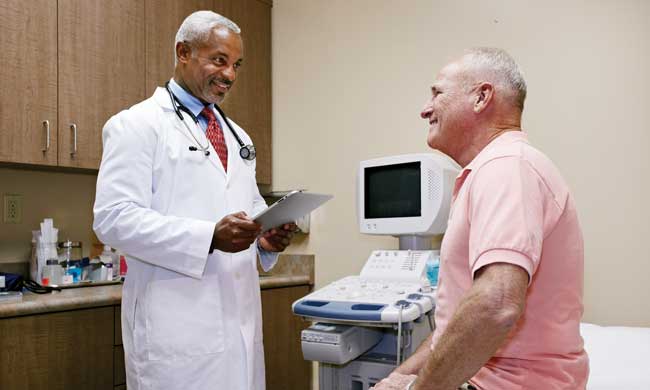
(Family Features) Men with urinary symptoms common with an enlarged prostate, also known as benign prostatic hyperplasia or BPH, may anticipate and plan for urgent and frequent bathroom needs and even avoid events and activities they enjoy because of their urinary symptoms. Whether they rearrange their morning schedules in anticipation of interrupted sleep, limit the amount they drink or purposefully seek out and stay close to the bathroom, this is known as extreme bathroom planning and can disrupt normal daily activities.
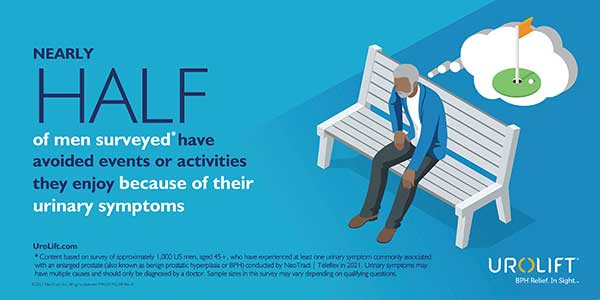 In men with BPH, the enlarged prostate presses on and blocks the urethra, causing bothersome urinary symptoms, such as an urgent or frequent need to urinate or the sensation that the bladder is not empty after urinating. These symptoms can significantly impact a man’s quality of life, leading to interrupted sleep and even a loss of productivity and depression, according to research published in “British Journal of Urology International.”1
In men with BPH, the enlarged prostate presses on and blocks the urethra, causing bothersome urinary symptoms, such as an urgent or frequent need to urinate or the sensation that the bladder is not empty after urinating. These symptoms can significantly impact a man’s quality of life, leading to interrupted sleep and even a loss of productivity and depression, according to research published in “British Journal of Urology International.”1
As part of a survey sponsored by Teleflex Incorporated of approximately 1,000 men in the United States, 45 years and older, who have experienced at least one bothersome urinary symptom, nearly half (45.49%) reported they have avoided events or activities they enjoy because of their bothersome urinary symptom.2
When they do attend an event or perform an activity, a significant number of men surveyed make plans or take action to accommodate their bathroom needs. In fact, more than 40% have chosen certain routes on road trips because they have more or better availability of restroom facilities. Additionally, about 1 in 5 said locating the closest bathroom is the first thing they do when they go somewhere new, and about 43% selected seats when purchasing tickets to an event based on proximity to the restroom.2
These “extreme” bathroom planning habits are not just limited to daytime activities. Many men with urinary problems, including BPH patients, experience frequent nighttime waking to urinate.
The majority of those surveyed (more than 70%) said their energy levels have been impacted during the day because they get up frequently at night to urinate. To avoid this, about 3 in 4 men (74.8%) limit the amount they drink in the evening. Some men (about 22%) have even slept in another bed or room than their spouse, partner or significant other to avoid waking him or her when getting up to urinate.2
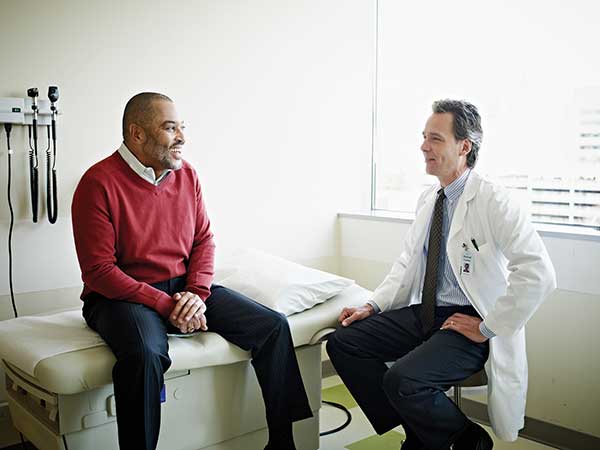 “It’s important for men to be aware of symptoms of BPH, including frequent trips to the bathroom during both daytime and nighttime,” said Ana Fadich, vice president of the nonprofit Men’s Health Network. “While not all urinary symptoms are caused by BPH, men over the age of 45 who are experiencing urgent or frequent urinary symptoms should consider speaking with their doctor about their prostate health.”
“It’s important for men to be aware of symptoms of BPH, including frequent trips to the bathroom during both daytime and nighttime,” said Ana Fadich, vice president of the nonprofit Men’s Health Network. “While not all urinary symptoms are caused by BPH, men over the age of 45 who are experiencing urgent or frequent urinary symptoms should consider speaking with their doctor about their prostate health.”
More than 12 million men in the U.S. seek treatment for BPH.3 BPH is unrelated to, but more common than, prostate cancer, according to the American Cancer Society,4,5 and if left untreated can lead to permanent bladder damage.6
Medications are a common treatment option for men diagnosed with BPH. Among those surveyed, more than 65% have taken medication to treat their condition. However, nearly 1 in 4 said their medication was “not very effective” or “not effective at all” at helping reduce their need to plan their next bathroom trip.2
BPH relief through medication can be inadequate with potential side effects such as sexual dysfunction, dizziness and headaches, prompting many men to quit using their BPH treatment medications.7 A study published in the “Journal of Urology” also found commonly prescribed BPH medications are linked to an increased risk of new instances of heart failure in some men.8 Among men participating in the Teleflex survey, those men taking BPH medication and who have never had a medical procedure or surgery to treat their condition, more than two-thirds (66.81%) said they are extremely, very or somewhat interested in a minimally invasive procedure that could help reduce their bathroom visits and planning needs.2
An option like the UroLift® System is a minimally invasive treatment for lower urinary tract symptoms due to BPH. It is indicated for the treatment of symptoms of an enlarged prostate up to 100 cubic centimeters in men 45 years or older. The UroLift System permanent implants, in many cases can be delivered during an outpatient procedure and is a proved approach to treating prostate obstruction without heating, cutting, destroying or removing prostate tissue.9,12
The UroLift System is the only leading BPH procedure shown to not cause sexual dysfunction (no instances of new, sustained erectile or ejaculatory dysfunction) as shown in the LIFT pivotal study.10,11 Most common side effects are temporary and include pain or burning with urination, blood in the urine, pelvic pain, urgent need to urinate and/or the inability to control the urge.9 Rare side effects, including bleeding and infection, may lead to a serious outcome and may require intervention. Speak with your doctor to determine if you may be a candidate.
To talk to a doctor about safe and effective treatments for BPH, visit UroLift.com to find a urologist in your area.
1. Speakman, BJUI 2014
2. Data on file: Men’s Health Survey 2021, n=1,000 conducted by Teleflex l NeoTract 2021
3. NeoTract US Market Model estimates for 2020, data on file
4. American Cancer Society Key Statistics for Prostate Cancer http://www.cancer.org/cancer/prostatecancer/detailedguide/prostate-cancer-key-statistics
5. Berry, J Urol 1984
6. Tubaro, Drugs Aging 2003
7. AUA BPH Guidelines 2003, 2010, 2018
8. Lusty A, J Urol 2021
9. Roehrborn, J Urology 2013 LIFT Study
10. AUA BPH Guidelines 2003, 2020
HEALTHY LIVING
Understanding the hidden dangers of LDL (Bad) Cholesterol

(Family Features) These days, wellness information is practically everywhere you turn. Do this; don’t do that. Eat more of this; eat less of that. This is good for you; that is bad.
It can be hard to cut through all the noise, but the reality is, when it comes to something as serious as your heart health and LDL cholesterol – the “bad” cholesterol – ignoring it can be downright dangerous for your health.
According to the American Heart Association, about every 40 seconds, someone in the United States has a heart attack, and strokes occur at about the same frequency.
High LDL cholesterol, often called “bad” cholesterol, significantly increases your risk of heart disease.
A poll conducted by The Harris Poll for the American Heart Association revealed 75% of heart attack and stroke survivors reported having high cholesterol. Yet nearly half (47%) of heart attack and stroke survivors are unaware of their LDL cholesterol number. This lack of awareness shows more knowledge is needed to help survivors proactively manage their health.
In fact, knowledge is key to reducing your risk of heart disease. Understanding the impact of LDL cholesterol and knowing your LDL number can help you make informed decisions.
Cholesterol: The Good and The Bad
Cholesterol is a waxy, fat-like substance your body needs to build cells and produce hormones. However, not all cholesterol is created equal:
- LDL (low-density lipoprotein) Cholesterol: This is the “bad” cholesterol. When too much LDL cholesterol circulates in the blood, it can build up in the inner walls of the arteries that feed the heart and brain, forming plaque that can narrow and eventually block these arteries, leading to heart attack or stroke.
- HDL (high-density lipoprotein) Cholesterol: Known as the “good” cholesterol, HDL helps remove the “bad” cholesterol from the arteries, protecting against heart attack and stroke.
A Silent Threat
Many people think high cholesterol has obvious signs, but that’s not always the case. In fact, about half of U.S. adults and 42% of heart attack and stroke survivors mistakenly believe high cholesterol has clear symptoms. However, high LDL cholesterol typically doesn’t show any signs, which is why it’s known as a silent threat to your heart.
People who have had a heart attack or stroke are at higher risk of future cardiovascular problems, which is why it’s important to monitor your cholesterol regularly to help prevent future events.
It’s also important to know high LDL cholesterol can be genetic, meaning someone who eats a healthy diet and exercises regularly can still have high cholesterol. Additionally, the risk of high LDL cholesterol increases with age.
That’s why the American Heart Association’s “Lower Your LDL Cholesterol Now” initiative, nationally sponsored by Amgen, emphasizes the importance of regular cholesterol checks regardless of your weight, diet and physical activity levels. Knowing your LDL cholesterol number – and understanding the target levels based on your health history – gives you the opportunity to manage your health proactively. This enables you to make informed decisions to prevent future heart issues.
Know Your Number
You can reduce your risk of a heart attack or stroke by knowing and addressing your LDL cholesterol number.
Working closely with your doctor allows you to actively manage high LDL cholesterol – often a key risk factor you can help control – and together, you can develop a personalized treatment plan. Ask your doctor or health care provider for a cholesterol test to know your LDL number. Understanding your cholesterol number is the first step toward managing it effectively. If necessary, appropriate management of your LDL cholesterol can help reduce your risk of a heart attack or stroke.
Your doctor may also talk with you about your personal and family medical history; previous heart-related medical events such as a heart attack or stroke; lifestyle habits such as tobacco use, obesity, unhealthy living or aging; racial and ethnic backgrounds; and reproductive health.
Lower is Better
When it comes to your cholesterol, guidelines from the American Heart Association and the American College of Cardiology recommend “lower is better” to reduce your risk. Studies show that an LDL number or below 100 mg/dL is ideal for healthy adults.
If you have a history of heart attack or stroke and are already on a cholesterol-lowering medication, your doctor may aim for your LDL to be 70 mg/dL or lower.
Talk to your doctor about the right treatment plan for you. Positive lifestyle habits, such as exercising and eating a healthy diet, may also help.
However, if you’ve had a heart attack or stroke before, lifestyle changes alone may not be enough to lower your risk of another event. Your doctor may recommend cholesterol-lowering medications to protect your heart health.
Learn more about LDL (bad) cholesterol by visiting heart.org/LDL.
SOURCE:
HEALTHY LIVING
Save a life from stroke

(Family Features) Strokes can happen to anyone, at any age – even young people. Despite being one of the leading causes of death and long-term disability in the United States, strokes are largely preventable, treatable and beatable – if you can control your risk factors.
According to the American Stroke Association, a division of the American Heart Association, every 40 seconds, someone in the U.S. has a stroke. Keeping blood pressure in check, living a healthy lifestyle and knowing stroke warning signs may help protect you and your loved ones.
Here are key insights from the American Stroke Association’s Together to End Stroke initiative, nationally supported by the HCA Healthcare Foundation.
Controlling Risk Factors
Up to 80% of strokes may be preventable, according to the American Stroke Association. You can take action to prevent strokes by managing your risk factors, like high blood pressure, a leading cause and controllable risk factor for stroke and heart disease.
Other risk factors include diabetes and obesity, which can be kept in check with healthy lifestyle behaviors such as good nutrition. Quitting smoking and being physically active are important. Atrial fibrillation, or AFib, which is a quivering or irregular heartbeat, also increases stroke risk. In fact, people with AFib are five times more likely to have a stroke, according to the American Heart Association.
Preventing a Second Stroke
Nearly 1 in 4 strokes occur in people who had a previous stroke, sometimes because they don’t know what caused the first, making identifying the cause of the stroke a key step toward future prevention. Treatment depends on the type of stroke someone is having, which can be determined with a series of medical evaluations and tests.
Work with your health care professional to develop a plan that helps you move forward after a first stroke while preventing a second. This plan should include controlling risk factors, like achieving and maintaining healthy blood pressure, blood sugar and cholesterol levels.
“Preventing a second stroke is possible with the right approach,” said Teresita Casanova, MD, HCA Healthcare affiliated neurologist and American Stroke Association volunteer expert. “Taking medicines as prescribed, monitoring health numbers, and making small, consistent lifestyle changes can make a big difference. Stroke survivors should feel empowered to take control of their health and work with their care team to build a strong prevention plan.”
To help you in your journey, you can rely on tools such as the Heart & Stroke Helper, a free self-management app available for stroke survivors and their caregivers. The app allows patients to oversee their health in one place with features that track progress on lifestyle habits, manage medications, track health numbers, provide information about stroke and allow patients to connect with others for inspiration.
Find more ways to manage second stroke risk at Stroke.org
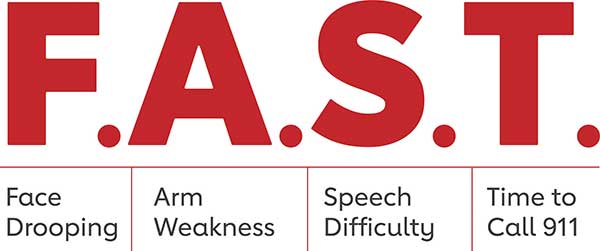
Act F.A.S.T.: How to Detect Signs of Stroke
Most adults in the U.S. don’t know the stroke warning signs, nor that stroke is largely treatable if you call 911 as soon as you recognize the symptoms.
Learning the acronym F.A.S.T. can help you recognize that someone may be having stroke symptoms so you can take life-saving action.
F: Face Drooping. Does one side of the face droop, or is it numb? Ask the person to smile. Is the person’s smile uneven?
A: Arm Weakness. Is one arm weak or numb? Ask the person to raise both arms. Does one arm drift downward?
S: Speech. Is speech slurred? Is the person unable to speak or hard to understand? Ask the person to repeat a simple sentence, like “The sky is blue.”
T: Time to Call 911. If you or anyone else shows any of these symptoms, call 911 immediately.
Photo courtesy of Shutterstock
SOURCE:
HEALTHY LIVING
How to conduct a skin care self-exam
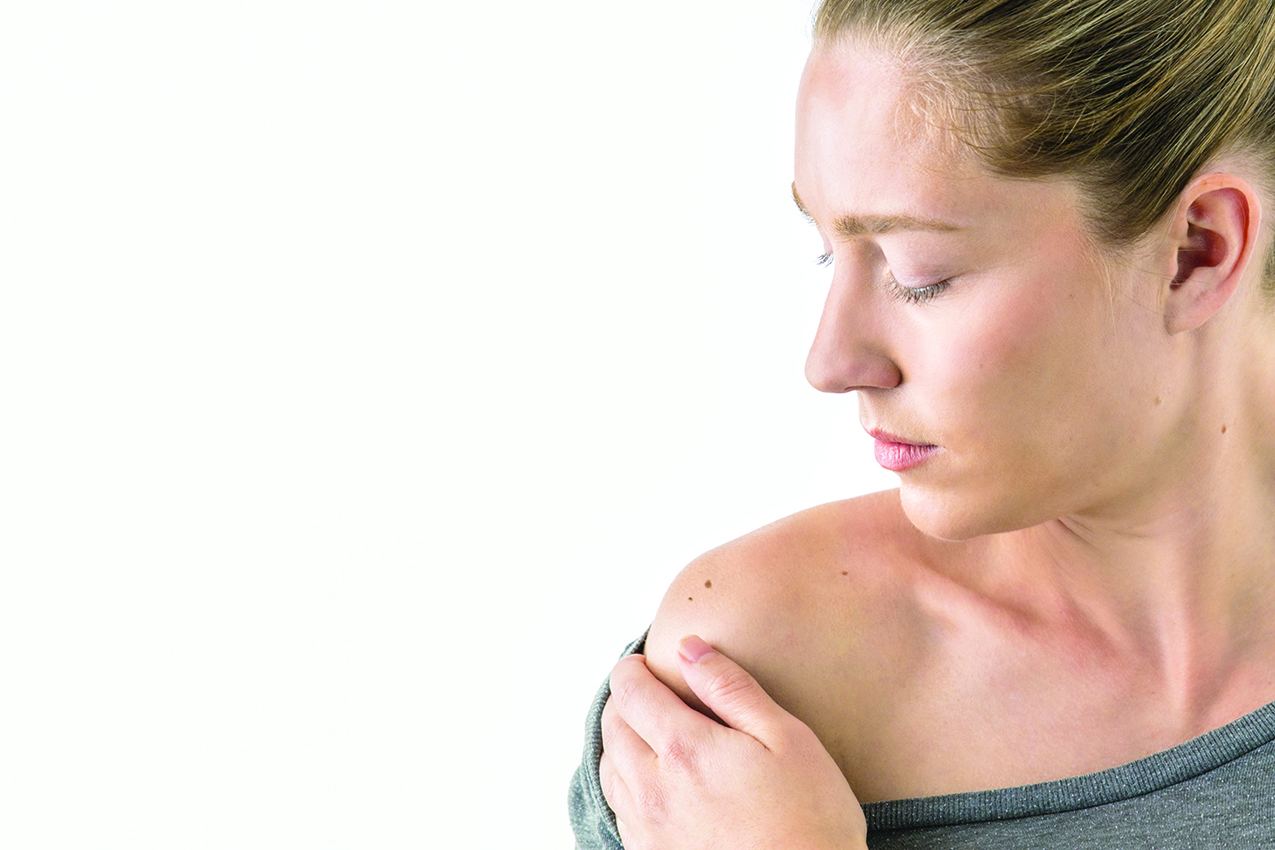
Time spent soaking up the summer sun is one of the things that makes the season so appealing. Warm outdoor air has a calming effect that can make anyone feel more relaxed and comfortable.
As good as warm summer sun can feel, overexposure to the sun can be dangerous. The World Cancer Research Fund reports there were more than 330,000 new cases of skin cancer diagnosed across the globe in 2022. A significant percentage of skin cancer cases can be prevented, and prevention is a multifaceted process that includes skin care self-examinations. Self-exams do not take up much time, and individuals can speak with their physicians about how frequently they should check their skin for signs of skin cancer. The U.S. National Library of Medicine offers the following instructions for how to conduct a skin self-exam.
Choose the right time to examine your skin. The USNLM recommends conducting a skin exam after bathing. Women who routinely conduct breast self-exams can check their skin at this time as well.
Use a full-length mirror. ItÕs not always easy to examine skin throughout the body. But signs of skin problems can occur anywhere on the body, including areas that might be hard to see without help. If possible, conduct a self-exam of the skin in front of full-length mirror in a brightly lit room.
Identify what youÕre looking for. The USNLM notes you should be looking for any new skin markings. This includes bumps, moles, blemishes, and changes in skin color.
Pay close attention to preexisting moles. A potential sign of skin cancer includes moles that change over time. Examine preexisting moles to see if they have changed in size, texture, color, and shape.
Look for unusual moles. The USNLM characterizes certain moles as Òugly duckling moles.Ó These unique moles look and feel different from nearby moles and may be indicative of skin cancer. Speak with a dermatologist if a self-exam uncovers the presence of moles with uneven edges or differences in colors or asymmetric shapes. Moles that look different from one side to the other also should be brought to the attention of a dermatologist. Moles that do not stop bleeding or will not heal also merit examination by a skin care professional.
When the time comes to conduct the exam, the USNLM recommends following these steps:
- Look closely at your entire body, both front and back, in the mirror.
- Check under your arms and on both sides of each arm. Be sure to examine the backs of your upper arms, which can be hard to see.
- Bend your arms at the elbow, and examine both sides of your forearm.
- Examine the tops and palms of your hands.
- Examine the front and back of both legs.
- Examine your buttocks and between your buttocks.
- Examine your genital area.
- Examine your face, neck, the back of your neck, and scalp. Use both a hand mirror and full-length mirror, along with a comb, to see areas of your scalp.
- Examine your feet, including the soles and the spaces between your toes.
- Ask a person you trust to help examine hard-to-see areas.
Skin cancer poses a formidable threat, but many cases of the disease are preventable. Routine skin self-exams are a vital component of skin cancer prevention. TF256909
-

 NEWS3 years ago
NEWS3 years ago2 hurt, 1 jailed after shooting incident north of Nocona
-

 NEWS2 years ago
NEWS2 years agoSuspect indicted, jailed in Tia Hutson murder
-

 NEWS2 years ago
NEWS2 years agoSO investigating possible murder/suicide
-

 NEWS2 years ago
NEWS2 years agoWreck takes the life of BHS teen, 16
-

 NEWS2 years ago
NEWS2 years agoMurder unsolved – 1 year later Tia Hutson’s family angry, frustrated with no arrest
-

 NEWS2 years ago
NEWS2 years agoSheriff’s office called out to infant’s death
-

 NEWS2 years ago
NEWS2 years agoBowie Police face three-hour standoff after possible domestic fight
-

 NEWS3 years ago
NEWS3 years agoDriver stopped by a man running into the street, robbed at knifepoint






